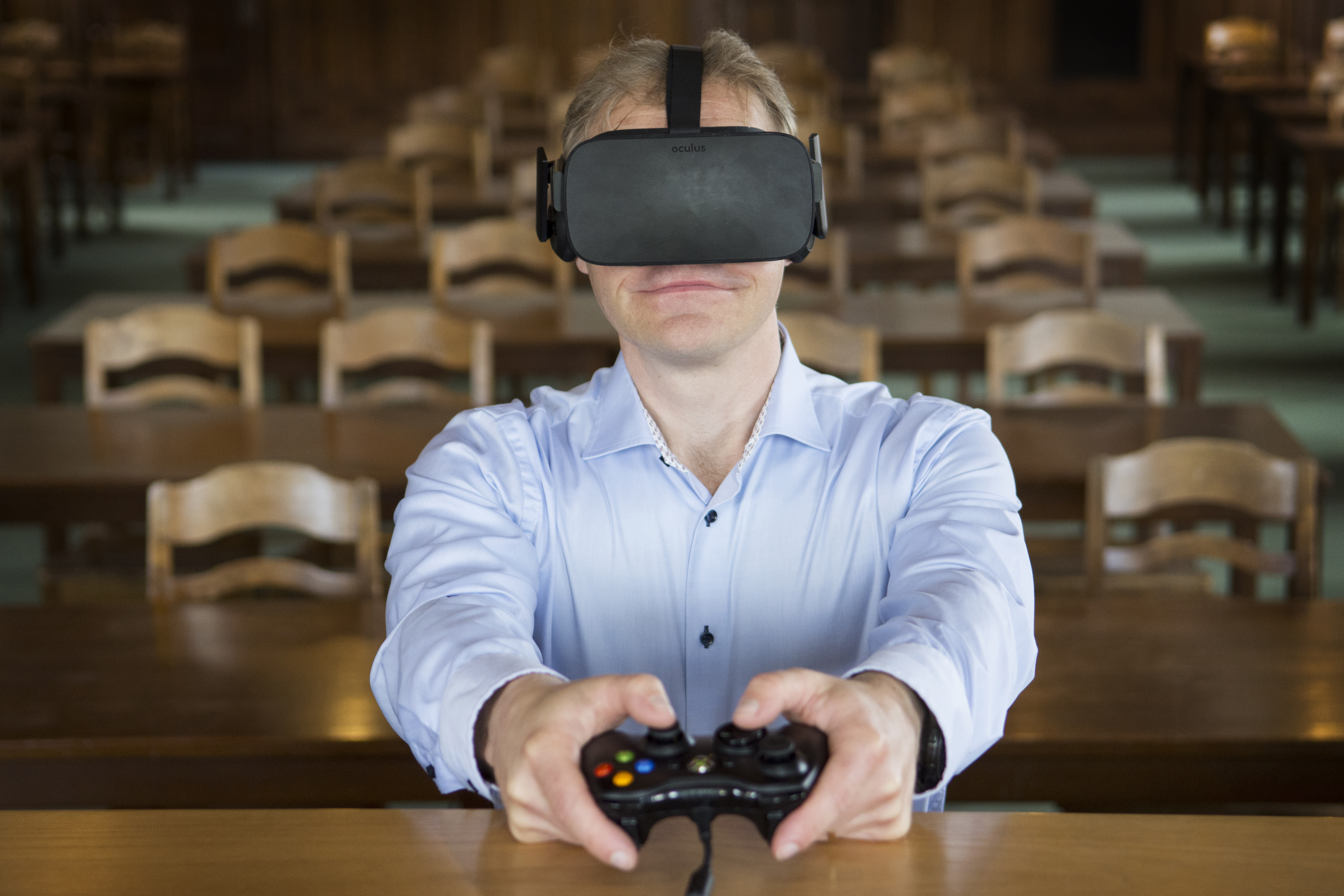Today a special issue was published in Journal of Anxiety disorders. A total of 11 papers are included and we are involved in four of those. The most longed for paper is probably the updated version of the classic meta-analysis by Emmelkamp and Powers published in 2008.
Trials of virtual reality exposure therapy (VRET) for anxiety-related disorders have proliferated in number and diversity since our previous meta-analysis that examined 13 total trials, most of which were for specific phobias (Powers & Emmelkamp, 2008). Since then, new trials have compared VRET to more diverse anxiety and related disorders including social anxiety disorder (SAD), posttraumatic stress disorder (PTSD), and panic disorder (PD) with and without agoraphobia. With the availability of this data, it is imperative to re-examine the efficacy of VRET for anxiety. A literature search for randomized controlled trials of VRET versus control or in vivo exposure yielded 30 studies with 1057 participants. Fourteen studies tested VRET for specific phobias, 8 for SAD or performance anxiety, 5 for PTSD, and 3 for PD. A random effects analysis estimated a large effect size for VRET versus waitlist (g = 0.90) and a medium to large effect size for VRET versus psychological placebo conditions (g = 0.78). A comparison of VRET and in vivo conditions did not show significantly different effect sizes (g = −0.07). These findings were relatively consistent across disorders. A meta-regression analysis revealed that larger sample sizes were associated with lower effect sizes in VRET versus control comparisons (β = −0.007, p < 0.05). These results indicate that VRET is an effective and equal medium for exposure therapy.
Read the full papers:
- Carl, E., Stein, A. T., Levihn-Coon, A., Pogue, J. R., Rothbaum, B., Emmelkamp, P., Asmundson, G. J. G., Carlbring, P., & Powers, M. B. (2019). Virtual reality exposure therapy for anxiety and related disorders: A meta-analysis of randomized controlled trials. Journal of Anxiety Disorders, 61, 27-36. doi:10.1016/j.janxdis.2018.08.003 [Free download until 2019-03-02]
- Fernández-Álvarez, J., Rozental, A., Carlbring, P., Colombo, D., Riva, G., Anderson, P. L., Baños, R. M., Benbow, A. A., Bouchard, S., Bretón-López, J. M., Cárdenas, G., Difede, J., Emmelkamp, P., García-Palacios, A., Guillén, V., Hoffman, H., Kampann, I., Moldovan, R., Mühlberger, A., North, M., Pauli, P., Peñate Castro, W., Quero, S., Tortella-Feliu, M., Wyka, K., & Botella, C. (2019). Deterioration rates in Virtual Reality Therapy: An individual patient data level meta-analysis. Journal of Anxiety Disorders, 61, 3-17. doi:10.1016/j.janxdis.2018.06.005 [Free download until 2019-03-02]
- Lindner, P., Miloff, A., Fagernäs, S., Andersen, J., Sigeman, M., Andersson, G., Furmark, T., & Carlbring, P. (2019). Therapist-led and self-led one-session virtual reality exposure therapy for public speaking anxiety with consumer hardware and software: A randomized controlled trial. Journal of Anxiety Disorders, 61, 45-54. doi:10.1016/j.janxdis.2018.07.003 [Free download until 2019-03-02]
- Minns, S., Levihn-Coon, A., Carl, E., Smits, J. A. J., Miller, W., Howard, D., Papini, S., Quiroz, S., Lee-Furman, E., Telch, M., Carlbring, P., Xanthopoulos, D., & Powers, M. B. (2018). Immersive 3D exposure-based treatment for spider fear: A randomized controlled trial. Journal of Anxiety Disorders, 58, 1-7. doi:10.1016/j.janxdis.2018.05.006
[lightbox link=”http://www.carlbring.se/wp/wp-content/uploads/2019/01/carlbring2.jpg” thumb=”http://www.carlbring.se/wp/wp-content/uploads/2019/01/carlbring2-683×1024.jpg” width=”683″ align=”center” title=”” frame=”true” icon=”image” caption=””]
